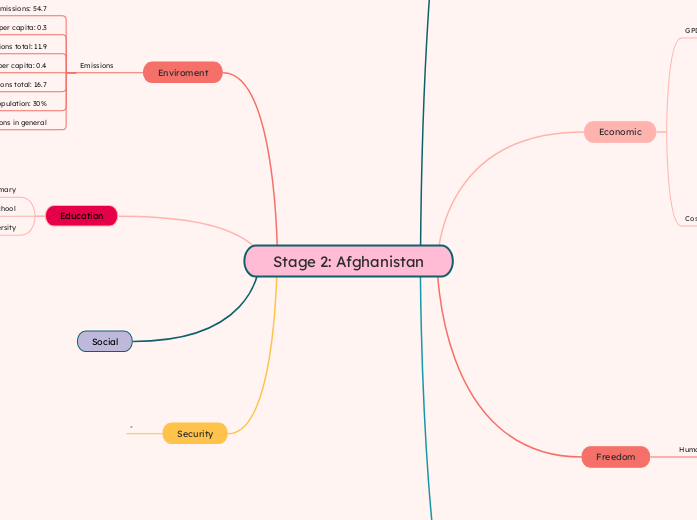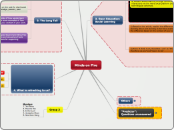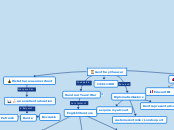Stage 2: Afghanistan
Security
anti-Taliban resistance groups
regional and global terrorist and violent extremist organizations
the Taliban
The Taliban is a political group in Afghanistan with is labelled as a terrorist organisation
-
Social
Education
Teachers
48 per cent of their teachers have the minimum academic qualifications (equivalent to an Associate Degree)
low attendance rates
shortage of schools and insufficient transportation are the main obstacles to children properly attending school
Many of them do not have clean or sanitary classrooms or bathrooms
many schools in Afghanistan are not well suited for children to attend
gender discrimination
Only 16 per cent of Afghanistan’s schools are girls-only, and many of them lack proper sanitation facilities, which further hinders attendance
Since the Taliban regained control in 2021, approximately 2.2 million girls have been deprived of their right to education beyond sixth grade
3.7 million children are out of school in Afghanistan, with 60% of them being girls
literacy rates
the literacy rate among youths aged 15-24 is about 62.66%
the adult literacy rate in Afghanistan is 37%
Enviroment
Emissions
Incredibly high emissions in general
Water access to population: 30%
Methane Emissions total: 16.7
Methane Emissions per capita: 0.4
Carbon emissions total: 11.9
Carbon emissions per capita: 0.3
World economic emissions: 54.7
Government
Islamic Emirate of Afghanistan
The Supreme Leader
Appointed by the Leadership Council
In charge of appointing and dismissing the cabinet, judiciary, armed forces general staff, and provincial and municipal governments, issuing decrees, special instructions, and orders regulating the operations
Head-of-state, commander-in-chief, and religious leader
A deputy leader will succeed the supreme leader upon death
Acting Supreme leader when they are unable to work or is incapacitated
Appointed by the supreme leader for an indefinite term
The deputy leader(s) of the Islamic Emirate of Afghanistan
Freedom
Human Rights
Subtopic
Economic
Cost of living
6.3 million people are internally displaced and living in sub-standard conditions without access to adequate shelter or essential services
2.9 million people experiencing emergency levels of hunger
12.4 million people in Afghanistan are food insecure
85% lives on approximately 1 USD a day
hourly rate: 24 Afghanis per hour
30,000 Afghanis per month
Education also has a big influence on job wages and salary. As seen in the education section, there are many people who live in Afghanistan who are unable to obtain an education, hence making an impact on the average monthly income.
Salary can be influenced incredibly depending on where one lives in Afghanistan. Someone who lives in Kabul will make more money due to the intensity of organizations and government jobs, as opposed to someone who lives in a rural area.
Average household income
GPD
recouped about 10% of past economic losses
2.7% annual change
73% of economic activity occurs outside the formal sector
estimate of $183 billion for 2025
2024 GDP at $177 billion
Health care
Mortality rates
this is a growth of 1.290%
5.762 people die per 1000 people every year
maternal mortality: 620 maternal deaths per 100,000 live births
high rates of infant mortality: 43 deaths per 1,000 live births
Primary Health care
the 2024 Afghanistan Humanitarian Needs and Response Plan (HNRP) is underfunded, having received only US $755 million, around 25% of the initial request
2024, 700 000 children are suffering from severe acute malnutrition lack access to vital treatment, including 27 600 children who need inpatient care
23.7 million people require humanitarian assistance
90% of Afghans live below the poverty line, and many cannot afford private hospitals.7 Public hospitals are free but busy and generally have limited resources and staff
Over half of women do not receive any type of prenatal care
2.5 healthcare workers per 10,000 people
Most people in Afghanistan do not have healthcare.









